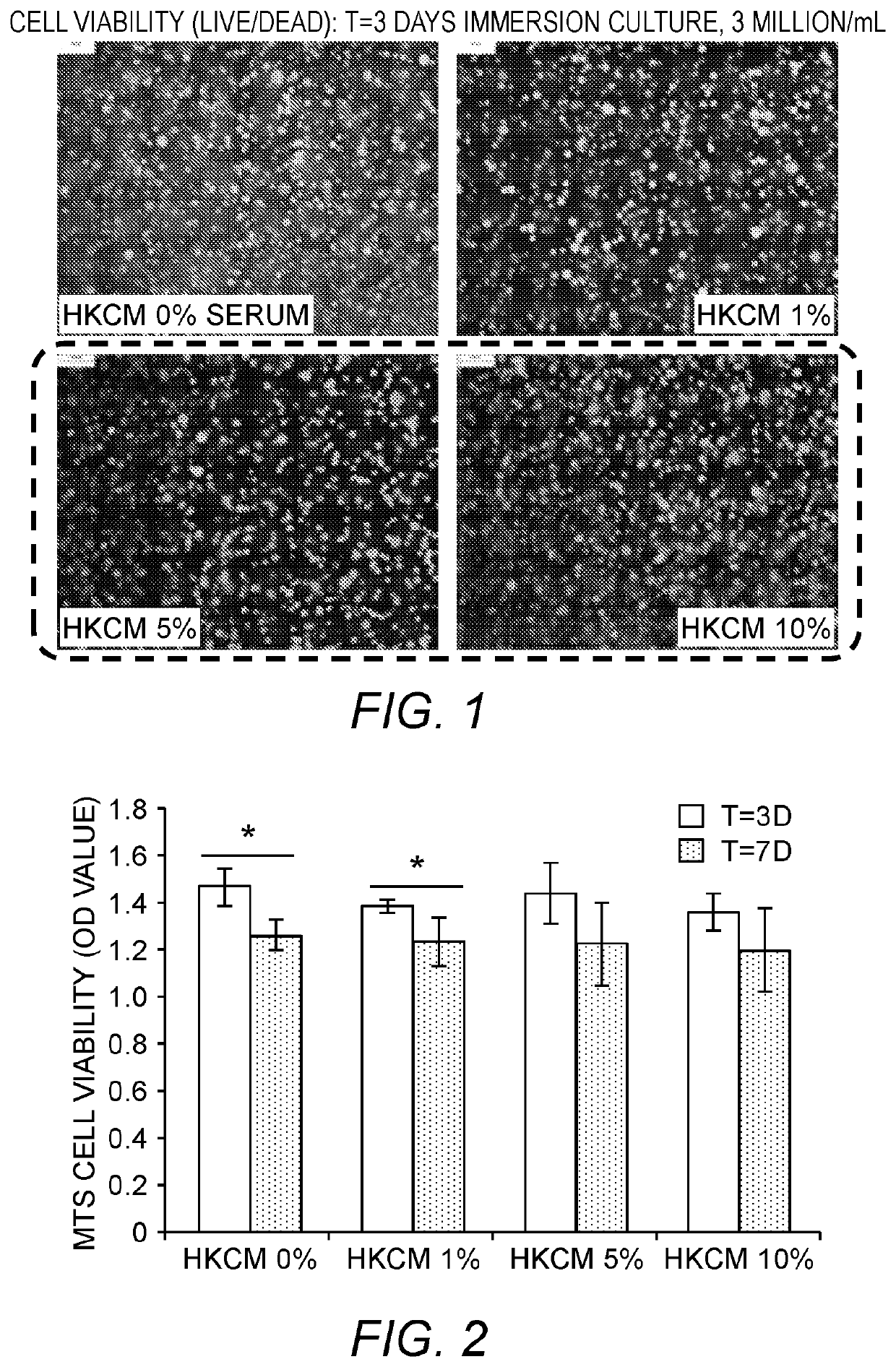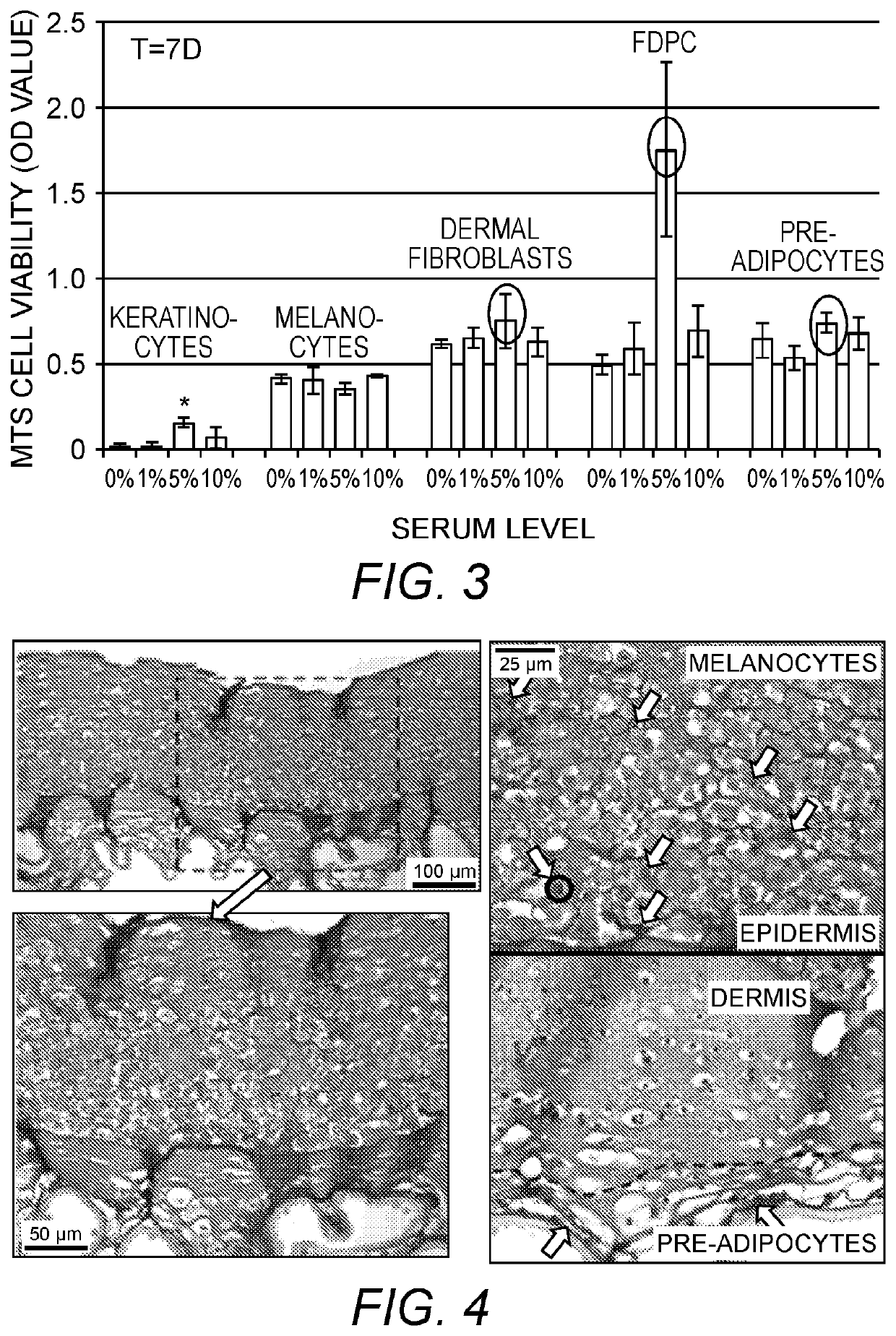Multi-layer skin substitute products and methods of making and using the same
a skin substitute and multi-layer technology, applied in the field of live, artificial, skin substitute products and methods, can solve the problems of limited treatment options for patients, limited current commercially available skin cellular models, and insufficient recapitulation of native skin by most current engineered skins or skin substitutes
- Summary
- Abstract
- Description
- Claims
- Application Information
AI Technical Summary
Benefits of technology
Problems solved by technology
Method used
Image
Examples
examples
Fabrication of Bioprinted Skin Substitutes In Vitro
[0083]In this example, pilot studies for optimizing culture conditions for 3D reconstructed or bioprinted in vitro skin substitutes with five human primary skin cells seeded with hyaluronan-gelatin based polyethylene glycol (PEG) hydrogels are presented.
[0084]Objectives of these Examples are: [1] To test and compare the viability and proliferation of cells seeded within gels with different media conditions (0, 1, 5, & 10% serum level); [2] To test the feasibility of encapsulating 5 different skin cells within hydrogels with even distribution and to determine an appropriate cell density per construct; and [3] To show the feasibility of bioprinting trilayered 3D skin constructs in vitro with nice layering and cell presentation.
[0085]Cell Sources. Human adult keratinocytes (K), melanocytes (Mel), dermal fibroblasts (DF), follicle dermal papilla cells (FDPC), and pre-adipocytes (p-Ad) and related growth media (GM) and differentiation me...
PUM
| Property | Measurement | Unit |
|---|---|---|
| thickness | aaaaa | aaaaa |
| thickness | aaaaa | aaaaa |
| thickness | aaaaa | aaaaa |
Abstract
Description
Claims
Application Information
 Login to View More
Login to View More - R&D
- Intellectual Property
- Life Sciences
- Materials
- Tech Scout
- Unparalleled Data Quality
- Higher Quality Content
- 60% Fewer Hallucinations
Browse by: Latest US Patents, China's latest patents, Technical Efficacy Thesaurus, Application Domain, Technology Topic, Popular Technical Reports.
© 2025 PatSnap. All rights reserved.Legal|Privacy policy|Modern Slavery Act Transparency Statement|Sitemap|About US| Contact US: help@patsnap.com



